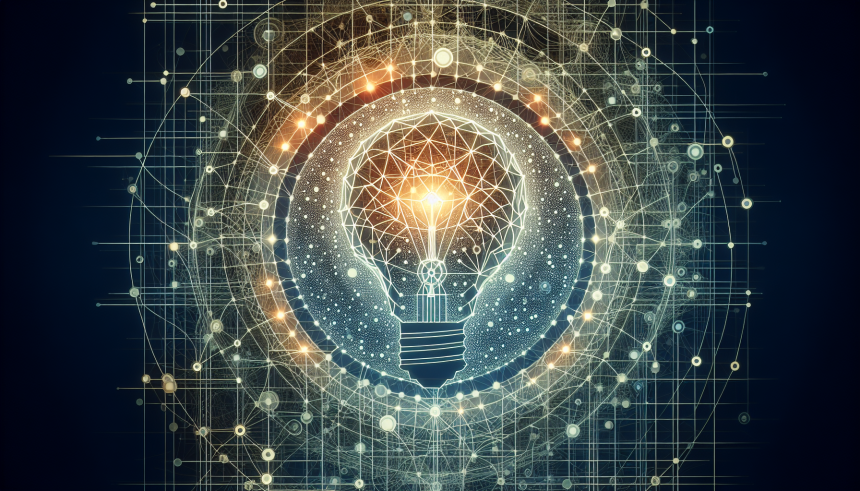Understanding Knowledge: A Framework for AI Foundations
Artificial Intelligence (AI) is fundamentally about simulating human-like understanding and reasoning. At the core of developing AI systems lies the concept of knowledge. Understanding knowledge involves delving into its different types, structures, and how it can be represented and manipulated by machines. This article presents a comprehensive framework to elucidate the foundations of knowledge in AI.
1. Types of Knowledge
Understanding knowledge in the context of AI requires differentiating between various forms of knowledge:
1.1. Declarative Knowledge
Declarative knowledge refers to factual information and data that can be expressed in simple statements. For instance, “Paris is the capital of France” is a declarative statement. In AI, this type of knowledge is often utilized in knowledge bases and databases.
1.2. Procedural Knowledge
Procedural knowledge involves ‘knowing how’ to perform tasks or processes. It is critical in areas like robotics and machine learning, where agents must learn to execute specific activities. For example, a robot programmed to assemble parts uses procedural knowledge.
1.3. Contextual Knowledge
Contextual knowledge enhances the understanding of information by situating it within a specific context. This form of knowledge is crucial in natural language processing, where the meaning of words often depends on surrounding text.
1.4. Tacit Knowledge
Tacit knowledge is personal and experiential. Unlike declarative knowledge, it is typically not easily communicated but often gleaned through experience. AI systems aiming to mimic human reasoning must find ways to integrate tacit knowledge, often through machine learning techniques.
2. Knowledge Representation
The way knowledge is depicted is key to how AI systems understand and reason about it. Common representations include:
2.1. Semantic Networks
Semantic networks offer graphical representations of knowledge in which concepts are nodes, and their relationships are edges. They effectively illustrate dependencies and connections, making them useful for natural language processing and knowledge bases.
2.2. Ontologies
Ontologies help structure knowledge by defining a set of concepts and categories in a subject area, along with the relationships between them. They enable interoperability among AI systems by providing a shared vocabulary.
2.3. Logic-Based Representations
Logic-based representations utilize formal logic to articulate knowledge. Propositional and predicate logic are often employed to enable rigorous reasoning processes, allowing AI to infer new knowledge.
2.4. Frames and Scripts
Frames and scripts are used to represent stereotypical situations and the knowledge about them. They enable AI to understand context and predict what might happen next in a given scenario.
3. Knowledge Acquisition
Knowledge acquisition is the process of gathering and refining knowledge. This step is essential for AI systems to maintain relevance and accuracy.
3.1. Manual Knowledge Acquisition
Involves human experts extracting and encoding knowledge into AI systems. Techniques like interviews and surveys are common.
3.2. Automated Knowledge Acquisition
Automated techniques leverage machine learning algorithms to discover patterns and extract knowledge from large datasets. Natural language processing plays a significant role in this area, enabling systems to understand and organize unstructured data.
3.3. Crowdsourced Knowledge Acquisition
Crowdsourcing allows leveraging collective intelligence for knowledge extraction. Platforms that invite user contributions can create rich, collaborative knowledge bases.
4. Knowledge Processing
Once knowledge is represented and acquired, it must be processed to derive insights or activate actions.
4.1. Reasoning
Reasoning refers to manipulating knowledge to infer new information. AI employs deductive, inductive, and abductive reasoning to draw conclusions. This logical framework enables systems to handle complex queries and provide insightful answers.
4.2. Learning
Machine learning involves adjusting knowledge based on data input. Algorithms like supervised, unsupervised, and reinforcement learning help systems learn from experience, improving their performance over time.
4.3. Inference
Inference is a critical process that allows AI to derive conclusions from established knowledge. Probabilistic reasoning and neural networks play significant roles in this process by evaluating certainty and uncertainty in data.
5. Knowledge Validation
To ensure reliability, validation of knowledge is essential. This involves verifying that the information is accurate and applicable.
5.1. Consistency Checking
AI systems must ensure that the knowledge they use does not contain contradictions. Algorithms can automate this process to identify conflicting information efficiently.
5.2. Source Verification
AI methodologies should evaluate the credibility of the sources from which knowledge is acquired. Utilizing trustworthy databases and expert-reviewed content is crucial for quality assurance.
6. Challenges in Knowledge Management
Despite advancements, managing knowledge in AI faces several challenges.
6.1. Knowledge Representation Complexity
The intricate nature of human knowledge makes it challenging to represent in a machine-readable format. This complexity necessitates ongoing research into more effective and relatable representation techniques.
6.2. Dynamic Knowledge
Knowledge is not static; it evolves with new discoveries and societal changes. AI systems must adapt seamlessly to incorporate updated information without significant downtime.
6.3. Ethical Considerations
Knowledge representation and acquisition must adhere to ethical considerations, especially concerning user privacy and data sourcing. Ensuring transparency in how knowledge is used and shared is paramount to maintain user trust.
7. Future Directions
Innovations in knowledge management for AI promise exciting developments.
7.1. Advanced Natural Language Processing
Future AI systems will utilize improved NLP techniques to better comprehend human language nuances, enhancing knowledge acquisition and representation.
7.2. Explainable AI
The demand for transparency in AI decision-making processes will prompt advancements in explainable AI, helping users understand how knowledge is processed and interpreted.
7.3. Enhanced Collaborative Systems
Integrating AI into collaborative environments will lead to enhanced collective knowledge initiatives where machines and humans work together more effectively.
Exploring the foundational aspects of knowledge within AI equips us with crucial insights into both the capabilities and limitations of artificial systems. By comprehensively understanding knowledge’s types, representation methods, processing techniques, and inherent challenges, we can better develop and utilize AI technologies that align with human thinking and societal needs.


